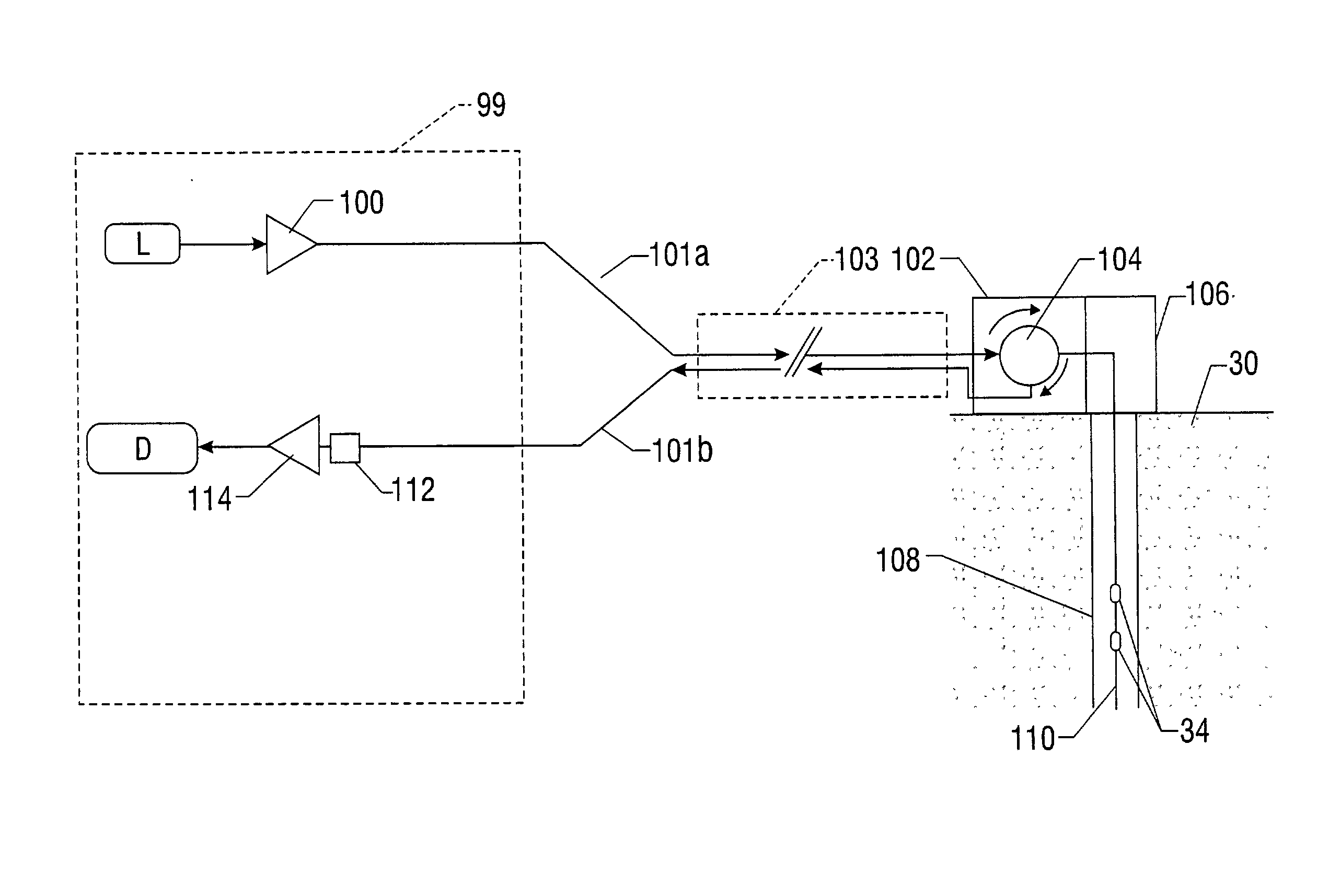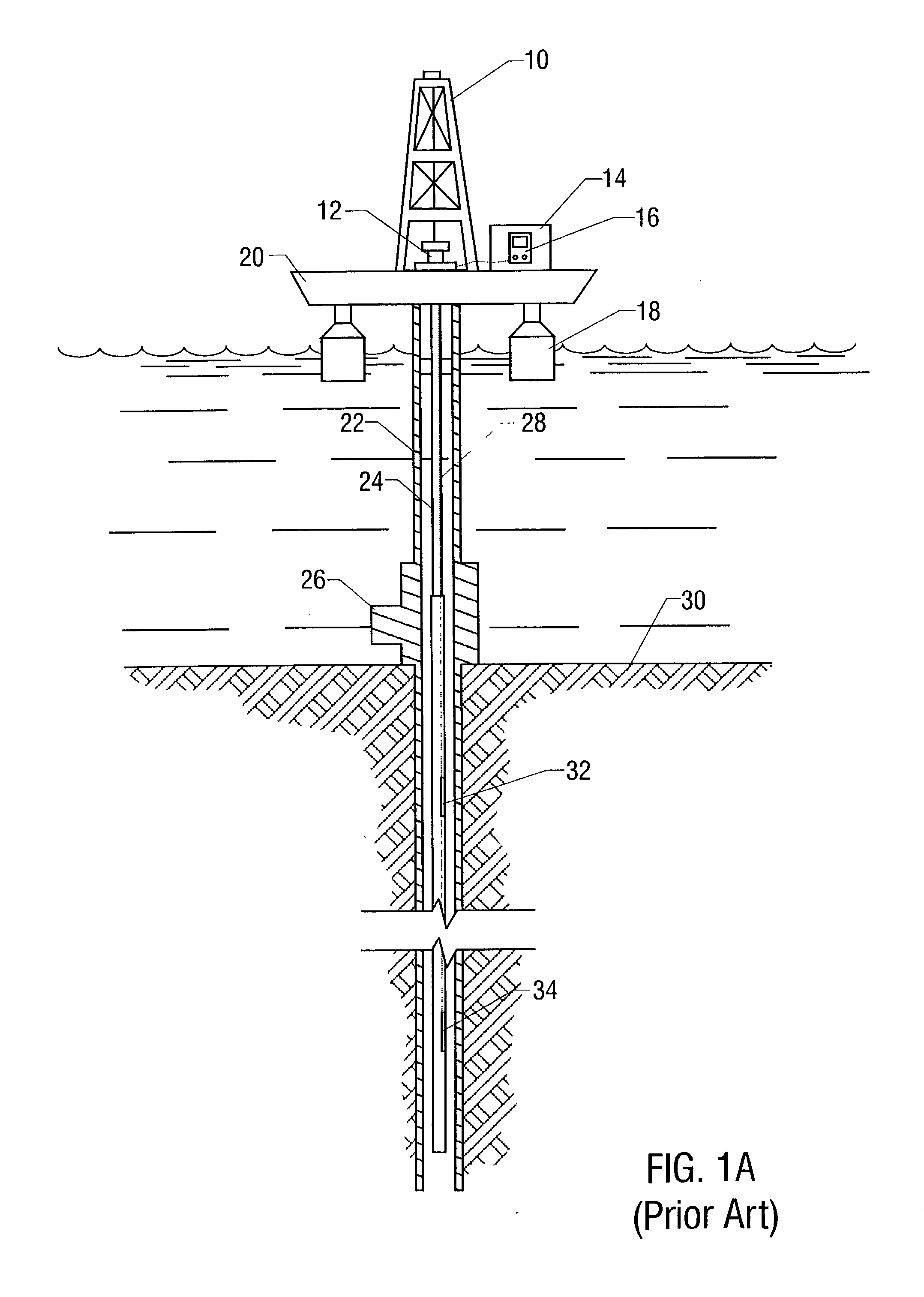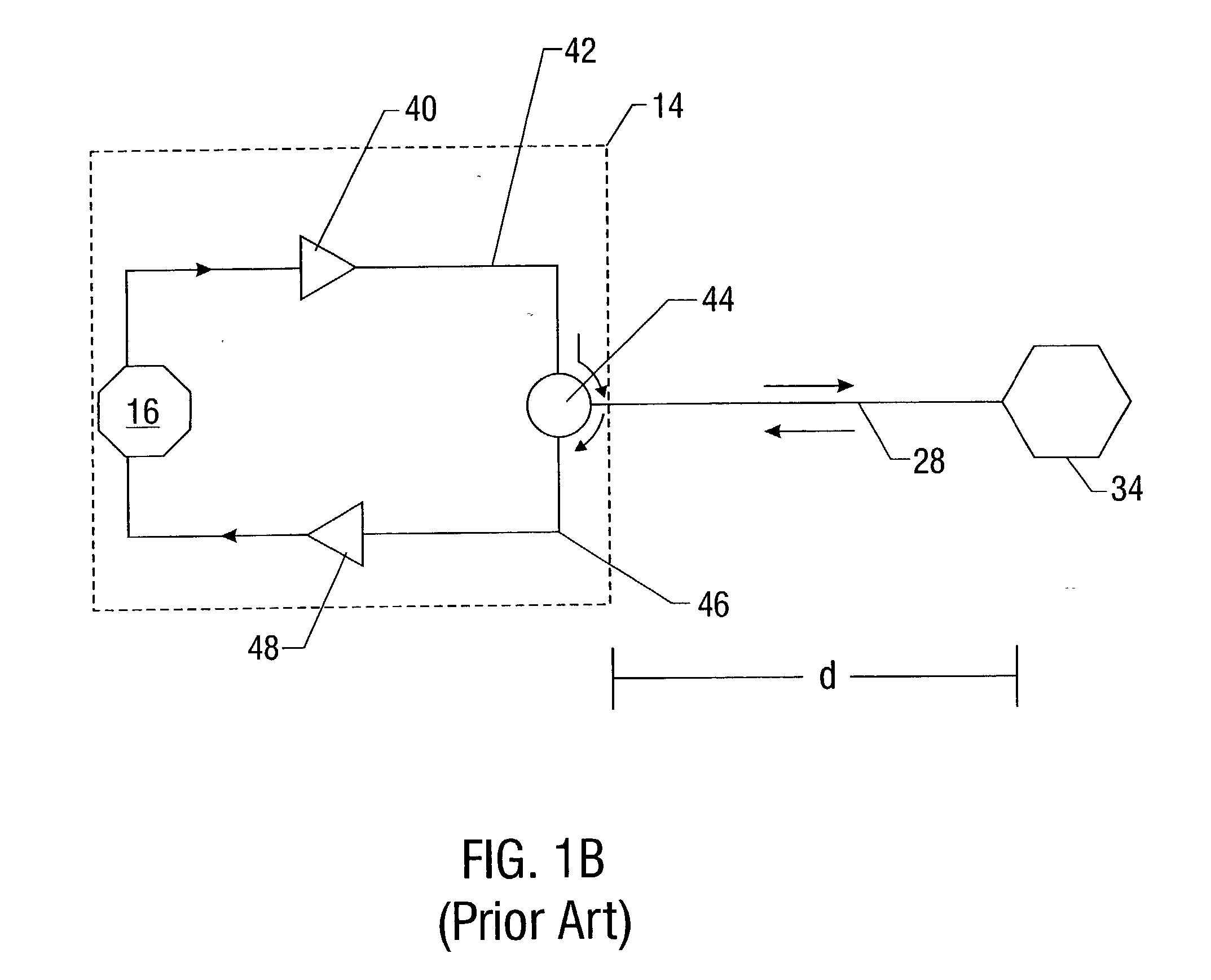Remotely deployed optical fiber circulator
- Summary
- Abstract
- Description
- Claims
- Application Information
AI Technical Summary
Problems solved by technology
Method used
Image
Examples
Embodiment Construction
[0021] The present invention relates to a system for monitoring and controlling production wells from a remote location using fiber optic technology. In particular, in an embodiment of the present invention, an optical circulator is remotely located within a wellhead at the top of the oil or gas well, and a separate return fiber is provided from the circulator back to the control system. In this manner, backwards-propagating optical scattering noise is minimized or eliminated, resulting in an improved optical signal-to-noise ratio and improved deployment distance of the fiber optic monitoring system.
[0022] A typical arrangement for an offshore fiber optic monitoring system according to the prior art is shown in FIG. 1A. Such an arrangement typically includes a floating workstation 18 or similar deep-water production system (e.g. fixed-leg platform, compliant tower, tension-leg platform (TLP), semi-submersible platform, or spar platform system) stationed over a submerged worksite on ...
PUM
 Login to View More
Login to View More Abstract
Description
Claims
Application Information
 Login to View More
Login to View More - R&D
- Intellectual Property
- Life Sciences
- Materials
- Tech Scout
- Unparalleled Data Quality
- Higher Quality Content
- 60% Fewer Hallucinations
Browse by: Latest US Patents, China's latest patents, Technical Efficacy Thesaurus, Application Domain, Technology Topic, Popular Technical Reports.
© 2025 PatSnap. All rights reserved.Legal|Privacy policy|Modern Slavery Act Transparency Statement|Sitemap|About US| Contact US: help@patsnap.com



